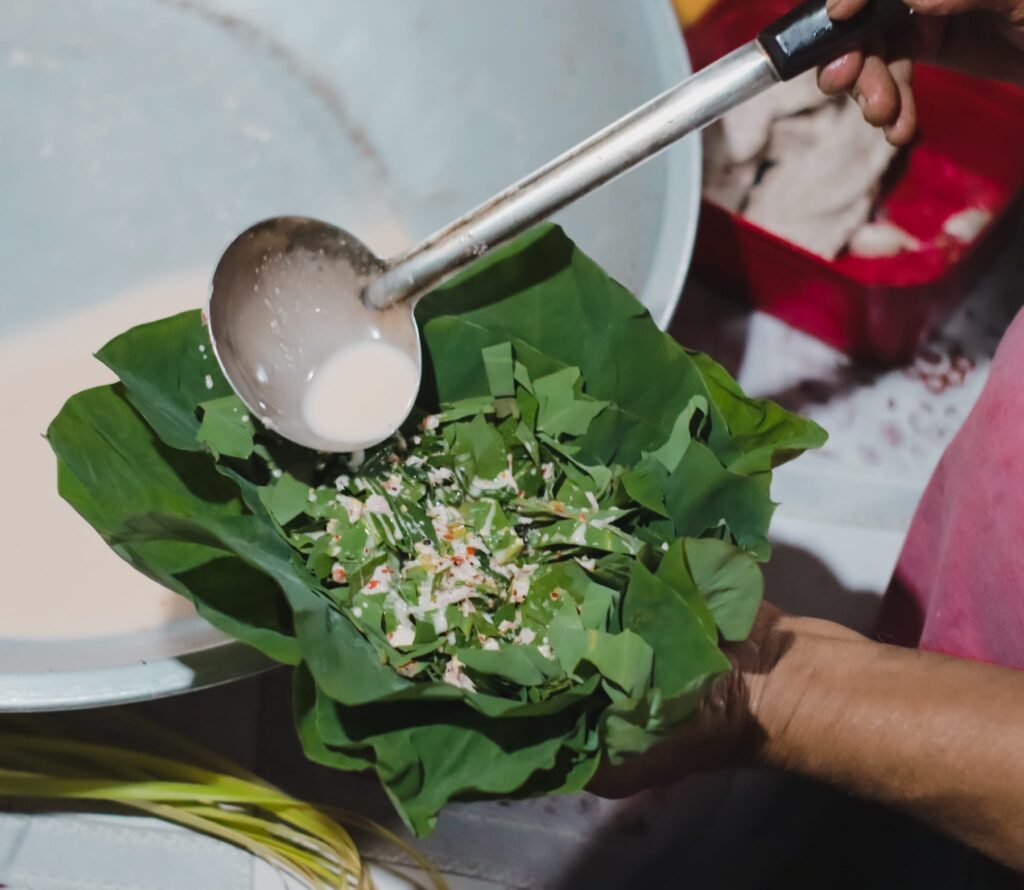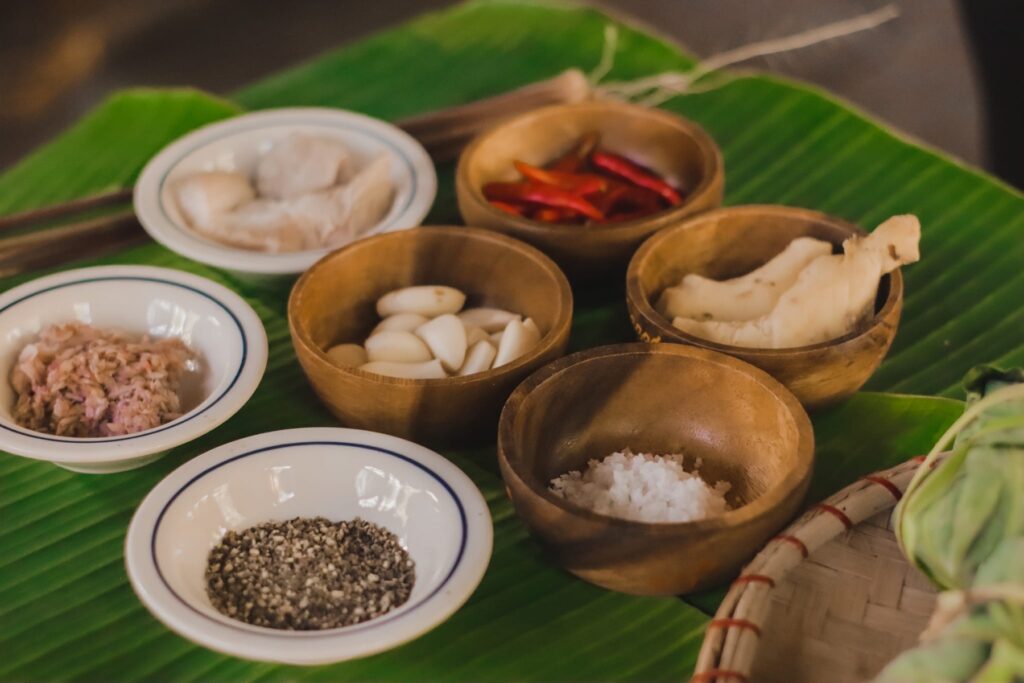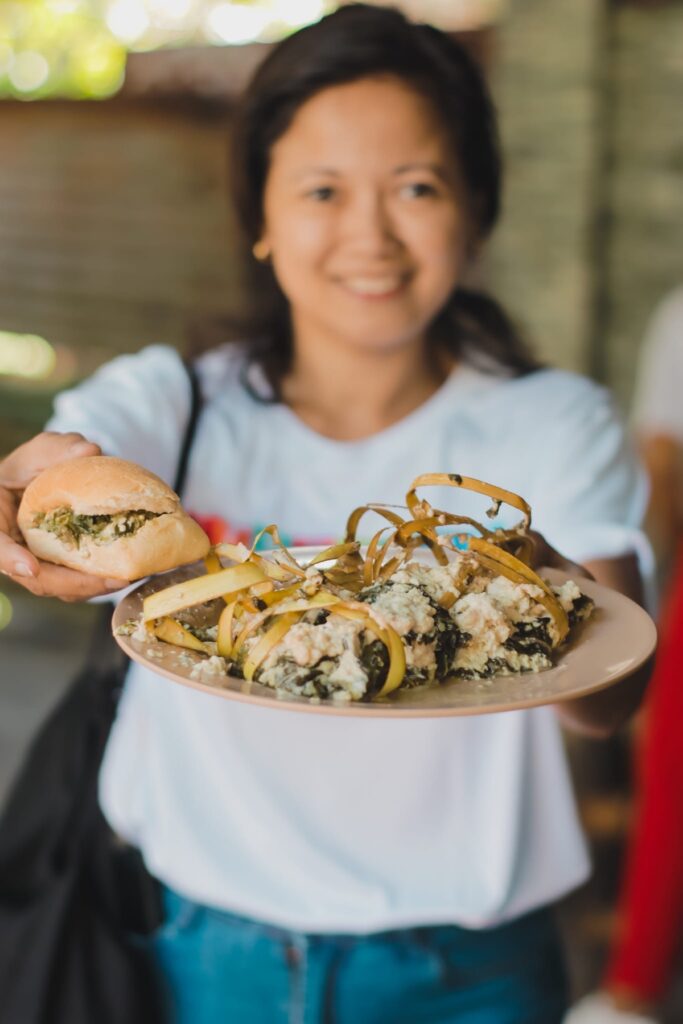Growing up, I always had fond memories of enjoying pinangat as a viand for lunch and dinner. But my recent visit to Camalig, an old town in Albay and the so-called home of pinangat dish, made me realize that I was too quick to claim that I knew how pinangat tasted.
Zeny’s pinangat has distinct and authentic layers of flavors mastered by the Nocedo family in Gapo, Camalig, Albay.
Unlike the usual shredded coconut and crab meat filling of a typical pinangat dish, Zeny’s pinangat has the most pronounced flavor of taro leaf.
I will never forget those soft layers of taro leaves filled with bits of pork stew and fermented shrimp, slowly melting in my mouth and giving me that explosion of spice and creaminess coming from the coconut milk mixture. It is, without doubt, definitely the best pinangat dish I’ve ever had in my life.



Mastering the cuisine
In an interview with Bicol.PH, Jomar Nocedo, the second-born child of Domingo and Zenaida ‘Zeny’ Nocedo, said that their family business started as early as 1982.
“Nung una po na gumawa sila mama, naglalako siya sa Daraga. Iniikot niya ang sentrong Daraga hanggang maging suki niya na ang LGU Daraga,” Jomar said.
[When my mother started making (pinangat), she’s selling it in Daraga. She go around centrong Daraga until she got her regular customers at LGU Daraga.]
Jomar learned his pinangat-making skills from his parents, which were also taught by his grandmother.
Jomar also shared that what makes Zeny’s pinangat special is not the ingredient but the taro leaves used for their dish and the process of how it was made.
The taro leaves that the Nocedo family used for their dish are bought from Guinobatan, Albay, a neighboring municipality of Camalig.
These taro leaves were planted in the vicinity of Mt. Mayon, which is known for having a distinct type of soil that is rich in minerals and plenty of flowing waters, producing a good kind of taro plant.
Since it’s also a family business, the Nocedo family works hand-in-hand in preparing and cooking the dish.
Tatay Domingo is the one stuffing the ingredients into the taro leaves, while Nanay Zeny ties the pinangat pouch. On the other hand, Jomar’s responsible for cooking the pinangat in a large pot.
But what amazed me more was the process of how Zeny’s pinangat is cooked. Prepared at 4 a.m., coconut milk will be extracted from 100 pieces of coconut.
At around 7 a.m., 75 pieces of pinangat pouch is set by batches into a large pot. One pail of pure coconut milk and another pail of combined coconut milk and water will be added to the pot and boiled for 30 minutes.
“After 30 minutes na pagpakulo, niluluto namin for two hours in low heat hanggang sa mareach yung maximum heat at maluto yung pinangat,” Jomar said.
[After 30 minutes of boiling, we cooked it (pinangat) for 2 hours in low heat until it reaches its maximum (level of) heat.]
According to the family, Zeny’s pinangat is cooked for two hours to fully absorb the coconut milk into the pouch and remove the itchiness of taro leaves. Taro leaves contain calcium oxalate and soft spikes, which cause the itchiness.
Every day, the family can produce 150 to 200 pieces of pinangat, depending on the orders, which are sold at P50 for each pouch.
Zeny’s pinangat also made its way to the Top 50 World’s Street Food Master in 2017, landing at the 22nd spot of the list. Street food is a one-dish business mastered by one family on a daily basis with a very pronounced flavor from layered ingredients.
Humble deed
After years of peddling Zeny’s pinangat on the streets, the family eventually got their own space at the airport cafe in Legazpi. Their business helped Tatay Domingo and Nanay Zeny sustain their family for 41 years and helped their three children, including Jomar, finish college.
However, due to lack of manpower and the volume of orders, they were forced to close the shop.
“Naisara ko po ang tindahan sa kadahilanang hindi ko na kayang magbenta pa doon sa highway kasi marami na ang order araw araw,” Jomar told Bicol.PH. “Wala na akong ibebenta pa sa labasan kasi dito pa lang sa bahay ubos na, kaya nasanay ang customer na pumunta na lang dito sa bahay.”
[I closed the shop because I can no longer sell due to many orders per day. I can’t sell outside anymore since it’s already sold-out in our home, so the customer got used to go and order at our house.]
Zeny’s pinangat can be bought directly at the comfort of the Nocedo family’s home at P4 Brgy. Gapo, Camalig, Albay.
Meanwhile, to return the luck that the family received from selling pinangat, Jomar is helping students by sustaining their education.
“For the past years po may mga napagtapos na po akong estudyante na tumutulong sa akin (sa pagtitinda),” Jomar proudly shared.
[For the past years, I was able to raise student’s education who helped me sell.]
Presently, he is sponsoring two high school students while also saving money to put up a resto for Zeny’s pinangat.
Best way to eat Zeny’s pinangat
Normally, people eat pinangat at lunch (or even dinner) with rice. But locals in Camalig liked theirs as viand, snack or even a go-to breakfast meal.
Served with hot coffee or cocoa milk, Zeny’s pinangat is best eaten as a filling for pandesal.
I know, it’s not the sweet jam or nutty peanut butter filling we’re all familiar with, but trust me, like you trust your lover’s sweet words, as you will never regret trying this ‘ultimate pinangat combo.’
The tender and slightly moist bun of pandesal stuffed with the soft Zeny’s pinangat will give you that new flavor that will definitely level up your usual pandesal breakfast and snack.
To those who want to try the best pinangat in town, you may order at Jomar Nocedo’s Facebook account or visit their home at P4 Gapo, Camalig, Albay. | Ken Oliver Balde


Photos: Joseph Trilles
